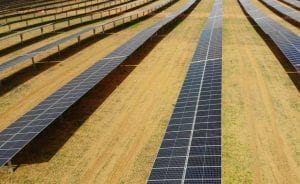The Australian Renewable Energy Agency (ARENA) has formally announced a $20 million funding round to encourage early stage research and development into hydrogen and the export of renewable energy such as “solar fuels”.
The funding round marks ARENA’s first step into the so-called “hydrogen economy”, and comes after it sought feedback in September to get an idea of what idea were in the market and what sort of funding would be needed.
Many in the industry see hydrogen, or other carriers such as ammonia, as an avenue for Australia to duplicate its lucrative energy exports, but with solar and other renewable fuels rather than LNG or thermal coal.
The idea is to use excess wind and solar, and take advantage of its continued cost falls, to use electrolysis to convert electrical energy into hydrogen, and then ship this to markets in north Asia or other countries hungry for low carbon fuels.
“Australia exports approximately three quarters of the energy it produces, in the form of coal and gas,” says CEO Ivor Frischknecht.
“Having some of the best solar and wind power resources in the world, Australia could become a superpower in exports of renewable energy, globally, leveraging existing relationships and growing global low carbon energy demand in countries such as Japan, South Korea and China.”
He is not the only person to believe this. Professor Ross Garnaut and former Clean Energy Finance Corp CEO Oliver Yates have both pointed to Australia’s potential to emerge as a green energy superpower.
South Australia is already toying with the idea of renewable energy exports and using the hydrogen economy to mop up excess output from its wind and solar farms, both planned and present.
The ACT has also extracted $180 million in investments in the hydrogen economy as part of its reverse auction scheme that will take it to the equivalent of 100 per cent renewable energy for its electricity needs by 2020.
The ACT scheme is focused on the domestic use of hydrogen, either as a storage for clean gas that can be used in the electricity grid, or in the gas mains network.
ARENA also says this so called “power-to-gas” technology can be used within Australia and effectively “time-shift” excess renewable energy for later use.
ARENA says it received 45 responses from its request for information in September, including on renewable energy projects, hydrogen fuel carriers and supply chains in Australia that make use of a carrier material such as ammonia to transport renewable fuel.
“Exporting renewable energy is one of ARENA’s priorities for investment and this RFI illustrates there is great potential,” Frischknecht said.
“Hydrogen is set to play a much larger role in the renewable energy space not only in Australia, but globally as the world moves to a low carbon economy.
“The potential for hydrogen to be a carrier of renewable energy is substantial, which is why ARENA will be looking to fund projects from the production of hydrogen all the way to transporting and end-use.
“ The capability to supply renewable hydrogen at a competitive price is likely to lead to investment throughout the rest of the supply chain, including dedicated renewables for export .”










